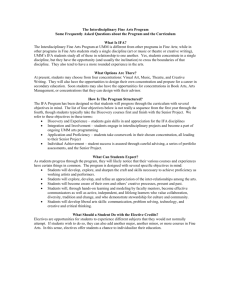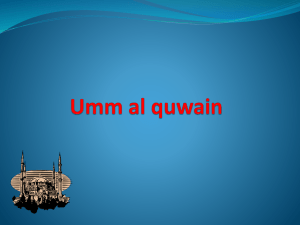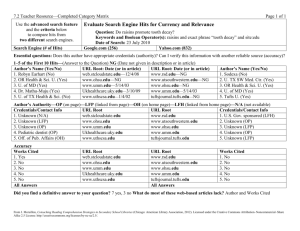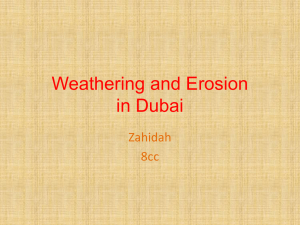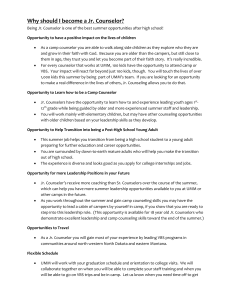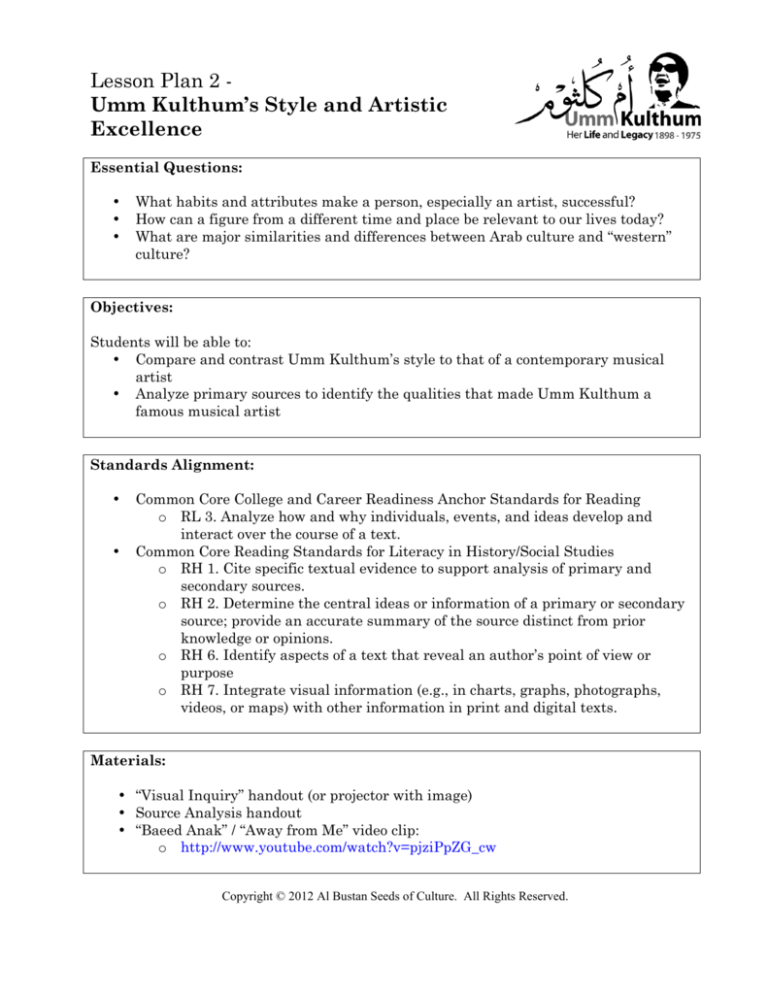
Lesson Plan 2 Umm Kulthum’s Style and Artistic
Excellence
Essential Questions:
•
•
•
What habits and attributes make a person, especially an artist, successful?
How can a figure from a different time and place be relevant to our lives today?
What are major similarities and differences between Arab culture and “western”
culture?
Objectives:
Students will be able to:
• Compare and contrast Umm Kulthum’s style to that of a contemporary musical
artist
• Analyze primary sources to identify the qualities that made Umm Kulthum a
famous musical artist
Standards Alignment:
•
•
Common Core College and Career Readiness Anchor Standards for Reading
o RL 3. Analyze how and why individuals, events, and ideas develop and
interact over the course of a text.
Common Core Reading Standards for Literacy in History/Social Studies
o RH 1. Cite specific textual evidence to support analysis of primary and
secondary sources.
o RH 2. Determine the central ideas or information of a primary or secondary
source; provide an accurate summary of the source distinct from prior
knowledge or opinions.
o RH 6. Identify aspects of a text that reveal an author’s point of view or
purpose
o RH 7. Integrate visual information (e.g., in charts, graphs, photographs,
videos, or maps) with other information in print and digital texts.
Materials:
• “Visual Inquiry” handout (or projector with image)
• Source Analysis handout
• “Baeed Anak” / “Away from Me” video clip:
o http://www.youtube.com/watch?v=pjziPpZG_cw
Copyright © 2012 Al Bustan Seeds of Culture. All Rights Reserved.
Procedure (suggested time):
Opening/Hook/Activate Prior Knowledge/Do Now: (7)
As students come in, they should write their answer in a journal or on other paper to
the prompt you have written on the board:
Who is one of your favorite musical artists? Why? Why do you think this person was
able to become famous?
After students have written for five minutes, ask volunteers to share. Probe for
further answers about why they became famous: do you think they have more talent
than others? What kind of talent do they have? Is it about luck and connections, or
do you think they are really better than any others? Are people attracted to their
style or their voice or their lyrics or some other attribute?
Visual Inquiry Activity: Introduction to Umm Kulthum (10)
Introduce Umm Kulthum, explaining that she was a famous musician from Egypt.
After reviewing the objectives, present students with two images of Umm Kulthum,
showing her performing at different time periods. Either project the images or
provide them as handouts. In pairs, ask students to examine the images and complete
Part I on their handout (see below). After about seven minutes, ask pairs to share
adjectives and comparisons.
Inquiry Activity: Introduction to Umm Kulthum, audio (optional) (10)
Based on these images, ask students to predict what she sounds like. How will her
voice sound? Will it be low or high? Will she sing fast or slow, heavy or light?
Tell students they will now listen and watch a clip of Kulthum performing: As they
listen, they should write down five adjectives that describe her voice. As or after
students listen, they should complete Part II on their handout (see below).
Inquiry Activity: Introduction to Umm Kulthum, fans and contemporaries (20)
Option #1: Give pairs of students one of the sources below. Have them complete the
chart provided for their one source. When students are done, ask them to circulate
and ask students with other sources to describe them, using what they learn to
complete the chart for each other source.
Option #2: Give pairs all six sources and have them work together to read each and
complete the chart.
Copyright © 2012 Al Bustan Seeds of Culture. All Rights Reserved.
Closing: Synthesis through writing (10)
Ask students to respond to the following prompt, based on what they have learned so
far about Umm Kulthum:
Imagine you have to describe Umm Kulthum to a person from the United States who
has never heard of her before. Explain why she was an accomplished and famous
musician. Also explain what makes her both different from and similar to modern
musical artists from the United States. Use details from all the sources you examined
to support your explanation.
Copyright © 2012 Al Bustan Seeds of Culture. All Rights Reserved.
Visual Inquiry
Copyright © 2012 Al Bustan Seeds of Culture. All Rights Reserved.
Source Analysis Handout
Source #1:
Youssef Kassab, a Syrian American vocalist, remembers seeing Umm Kulthum when she gave
a concert in Damascus, Syria.
She was maybe 50. I was 16 at the time. My father took me, and I listened to Umm
Kulthum. I saw her outside, with her chauffeur. He opened the door for her, I looked and
she [was] wearing red. Even her socks were red. Shoes red, purse red. Like a queen! Umm
Kulthum, she's number one to me.
Wharton, N. (2008) Umm Kulthum: The Voice of Egypt. NPR Weekend Edition.
Retrieved from http://www.npr.org/templates/story/story.php?storyId=90326836&ps=rs
Source #2:
Suheir Hammad, a Palestinian-American poet who grew up in Brooklyn, says she remains
awed by Umm Kulthum's ability to juice lines and embellish language. She notes that while
Umm Kulthum's songs were usually not religious, they all reflected a childhood spent praising
God.
She was the original diva for us . . . There's something about the fact that, even when
she's not saying Allah, she has said it so many times in her life that everything is
inflected with the notion of Allah of the most high," Hammad says. "And so, whether she
was talking about secular love, there was something there. It's like Sam Cooke's music
for me: something about church and fellowship and Juma, Friday prayer.
Hammad, S. (2010) Umm Kulthum: 'The Lady' Of Cairo. NPR Music. Retrieved from
http://www.npr.org/templates/story/story.php?storyId=124612595
Source #3:
Habeeb Salloum lives in Canada and writes about Arab culture and arts:
Tall, with pitch black hair, Umm Kalthum was striking and with her words and voice
she could create a magical atmosphere and enchant her listeners as no other Arab singer
in the past or at present has been able to do. She had a uniquely expressive tone which
could make her listeners laugh or even bring them to tears. Standing a few feet away
from the microphone in an evening gown studded with diamonds, she twisted and
crumpled a flowing scarf in her hands, as her voice, sometimes husky and strained or
leaping with pangs of love, would hit some impossible tones. At other times, her alto voice
which stretched to soprano or tenor and was punctuated, decorated and echoed by her
orchestra, touched cosmic depths and brought on a mixture of longing, wistfulness and
unfulfilled dreams.
Salloum, H. (1995) Umm Kalthum: Legendary Songstress of the Arabs. Al Mashriq.
Retrieved from http://almashriq.hiof.no/egypt/700/780/umKoulthoum/aljadid-uk.html
Copyright © 2012 Al Bustan Seeds of Culture. All Rights Reserved.
Source #4:
Zakariyya Ahmad, an Egyptian musician and composer, contemporary of Umm Kulthum:
By virtue of her memorization and reading of the Qur’an, she acquired experience that
made her capable of giving to each word or each letter what was appropriate to correct
pronunciation. From habit over the years, it became part of her nature, and her delivery
of the letters was perfected to the point where her listener can clearly perceive every word
she sings.
(Danielson, p. 143)
Source #5:
Al-Masrah, arts and culture magazine published in Egypt:
. . . the melodiousness of her voice, purity and clarity of articulation, excellence of
delivery as well as the deep feeling for what she sings, for the most beautiful singing is
that which moves the singer herself. And above all that she excels in her choice of poetry,
ancient and modern, which is unparalleled in beauty of style and loftiness of imagery.
(Danielson, p. 53)
Source #6:
Riyad al-Sunbati, an Egyptian composer, contemporary of Umm Kulthum:
Sometimes we would sit in her glassed-n room, if it were winter, an entire day without
food, water, telephone calls or visits. Umm Kulthum would spend the entire time
rehearsing a single line! For Umm Kulthum does not sing ordinary songs or ordinary
texts. . . . Days spent in this manner became weeks and then months producing a song.
(Danielson, p. 116)
Copyright © 2012 Al Bustan Seeds of Culture. All Rights Reserved.
Umm Kulthum: Entertainer Extraordinaire
At the height of her career, Umm Kulthum was a household name all over Egypt and
the Middle East. She was known as “Kuwkab EL Sharq”, literally the Star of the East.
She was loved by Arabic speaking audiences all over the world.
So what made her so good? Is what made her so good the same thing that makes the
musicians you love good? Use the sources provided to analyze what made this
musician so successful and loved.
Part I: Images of Umm Kulthum
7 – 10 adjectives that describe Umm
Kulthum’s style:
Two similarities and two differences
to a musical artist you listen to today:
Part II: Audio of Umm Kulthum
7 – 10 adjectives that describe Umm
Kulthum’s sound:
Two similarities and two differences
to a musical artist you listen to today:
Copyright © 2012 Al Bustan Seeds of Culture. All Rights Reserved.
Part III: Voices of fans and contemporaries
Source’s
name
Relationship to Umm
Kulthum
Qualities that make Umm Kulthum great
Synthesis through writing:
DIRECTIONS: Describe Umm Kulthum to a person from the United States who has
never heard of her before. Explain why she was an accomplished and famous
musician. Also explain what makes her both different from and similar to modern
musical artists from the United States. Use details from all the sources you examined
to support your explanation.
Copyright © 2012 Al Bustan Seeds of Culture. All Rights Reserved.


